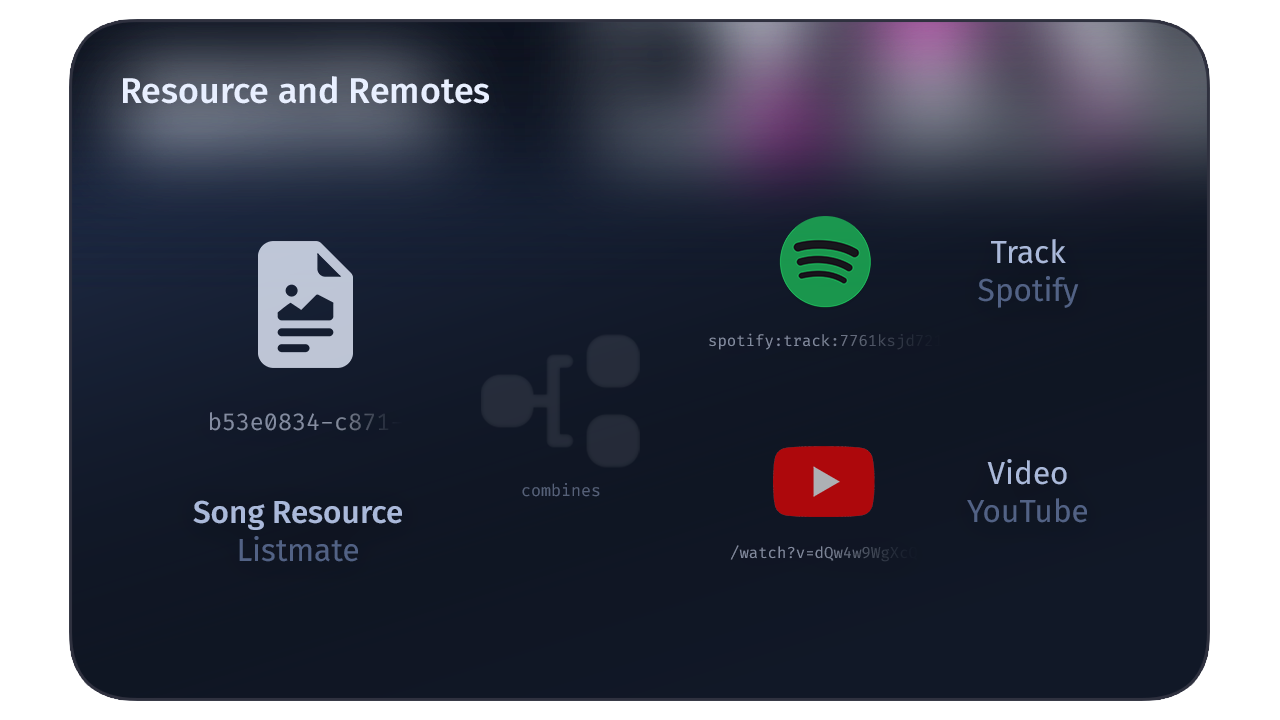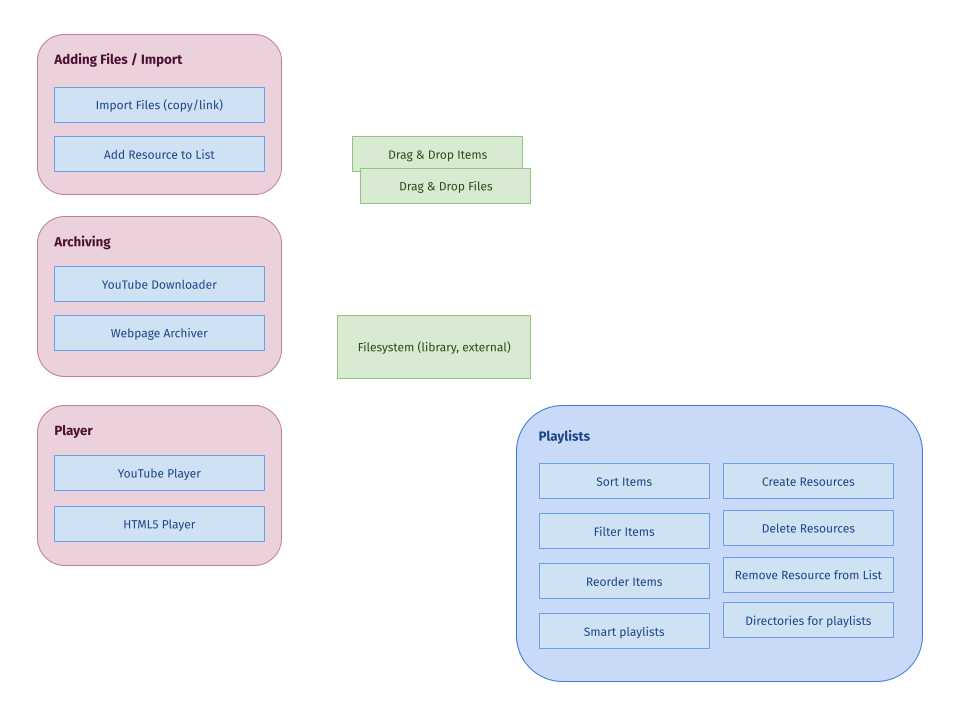Long gone are the days of the personal media library. Streaming services and SaaS dominate the market. Once subscriptions end, access to your data is lost until more payments have been made. Your playlists, bookmarks, and movies are trapped in silos that are hard to move away from.
Listmate was created to take back control of your personal knowledge by integrating external data APIs directly into the local media library.
- 📝 Organize your music library, your bookmarks, movies and more
- ⚡️ Flexible data model – everything is a resource
- 🎶 Import playlists etc. from Spotify, YouTube, Pocket and more
- 🔗 Link resources to each other and to external services
- 🔮 Automatic matching by finding and identifying resources from different services
- 🔊 Built-in player combines the playback of local, Spotify and YouTube files into a single interface
- 📻 Unified player queue – add videos and songs from different playback sources into a single joint queue
- 🤖 (Mostly1) works without JavaScript – built with Remix and on top HTTP & HTML
- 💾 Keep all your data in a single SQLite database file2
- 🔌 Direct integration with Spotify Data API and Playback SDK
- 📆 Scheduled data imports – daily RSS feeds, weekly playlist updates...
- 💿 Easy data exports – JSON, XML, CSV, RDF exports and symlinked FS "views"
Every list item and associated data is represented as a DataObject in the database, and as a Resource in application logic.
The reason for this separation is a DataObject is very much tied to database restrictions (and column types, as we use the Prisma ORM). On the other hand, a Resource doesn't care how the data is stored. This enables us to provide different database providers (like PostgreSQL) in the future, without having to change any application logic. Also, it is much easier to build custom typings for the different ResourceType types when that code is not auto-generated (as Prisma does).
DataObjects can be linked together using a ValueRef. These always have a .value and may contain a .ref, which contains the DataObject ID to link to.
E.g. a Song resource has a resource.values.artist property, that is a ValueRef to a Artist resource.
Using this system makes it really easy to build resource types, that link to each other with automatic UI support.
For example a Song resource may have an equivalent in the Spotify database. To link them, a DataObjectRemote is created, that contains the SourceType.SPOTIFY and the respective URI.
By linking them, these two items become the logical "same".
A DataObject may contain multiple different DataObjectRemote entries.
You can create lists locally, which can contain anything you want. You can also import lists from external services, but these can only contain types that the given API supports.
For example, you can import your Spotify playlists, and set the interval in which they should be synced.
List content limitations:
- Custom lists can contain any
ResourceType - Synced Spotify lists may only contain songs
- Exception: Synced favourites (albums, artists, songs)
- Synced Pocket list may only contain bookmarks
In the future, we may provide two-way syncing with selected providers, as not all of them provide appropiate APIs.
-
Start dev server:
npm run dev
This starts your app in development mode, rebuilding assets on file changes.
- Collection
- Song
- Album
- Artist
- Playlist [Collection]
- Bookmark
- Video
- Channel
- Webpage
- RSS Feed [Collection]
- Spotify API
- YouTube API
- Pocket API
- youtube-dl API
- Internet Archive API
- Archive API


